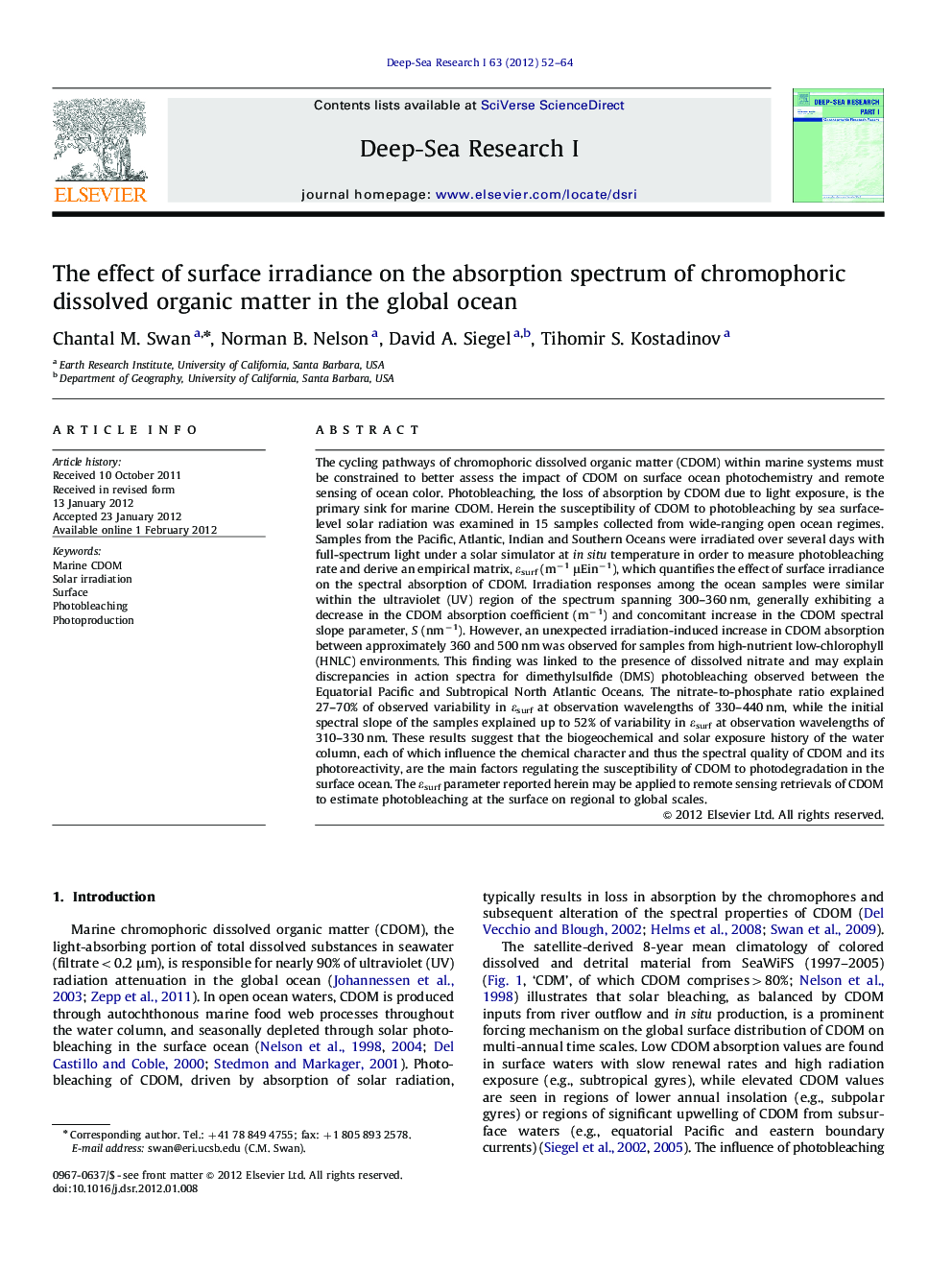| کد مقاله | کد نشریه | سال انتشار | مقاله انگلیسی | نسخه تمام متن |
|---|---|---|---|---|
| 4534767 | 1626367 | 2012 | 13 صفحه PDF | دانلود رایگان |

The cycling pathways of chromophoric dissolved organic matter (CDOM) within marine systems must be constrained to better assess the impact of CDOM on surface ocean photochemistry and remote sensing of ocean color. Photobleaching, the loss of absorption by CDOM due to light exposure, is the primary sink for marine CDOM. Herein the susceptibility of CDOM to photobleaching by sea surface-level solar radiation was examined in 15 samples collected from wide-ranging open ocean regimes. Samples from the Pacific, Atlantic, Indian and Southern Oceans were irradiated over several days with full-spectrum light under a solar simulator at in situ temperature in order to measure photobleaching rate and derive an empirical matrix, εsurf (m−1 μEin−1), which quantifies the effect of surface irradiance on the spectral absorption of CDOM. Irradiation responses among the ocean samples were similar within the ultraviolet (UV) region of the spectrum spanning 300–360 nm, generally exhibiting a decrease in the CDOM absorption coefficient (m−1) and concomitant increase in the CDOM spectral slope parameter, S (nm−1). However, an unexpected irradiation-induced increase in CDOM absorption between approximately 360 and 500 nm was observed for samples from high-nutrient low-chlorophyll (HNLC) environments. This finding was linked to the presence of dissolved nitrate and may explain discrepancies in action spectra for dimethylsulfide (DMS) photobleaching observed between the Equatorial Pacific and Subtropical North Atlantic Oceans. The nitrate-to-phosphate ratio explained 27–70% of observed variability in εsurf at observation wavelengths of 330–440 nm, while the initial spectral slope of the samples explained up to 52% of variability in εsurf at observation wavelengths of 310–330 nm. These results suggest that the biogeochemical and solar exposure history of the water column, each of which influence the chemical character and thus the spectral quality of CDOM and its photoreactivity, are the main factors regulating the susceptibility of CDOM to photodegradation in the surface ocean. The εsurf parameter reported herein may be applied to remote sensing retrievals of CDOM to estimate photobleaching at the surface on regional to global scales.
► Model for full-spectrum irradiance effect on oceanic CDOM absorption spectrum.
► Evidence of transient photoproduction of CDOM that is linked to HNLC regions.
► Oceanic CDOM photoreactivity driven by solar exposure and biogeochemical state.
► Empirical parameters for remote sensing estimation of surface CDOM photobleaching.
Journal: Deep Sea Research Part I: Oceanographic Research Papers - Volume 63, May 2012, Pages 52–64